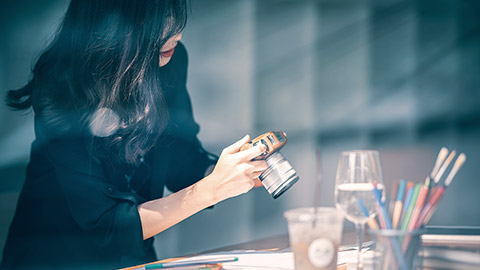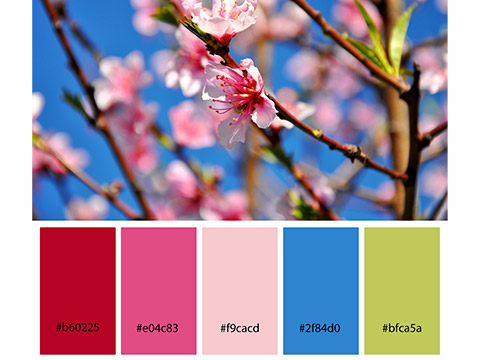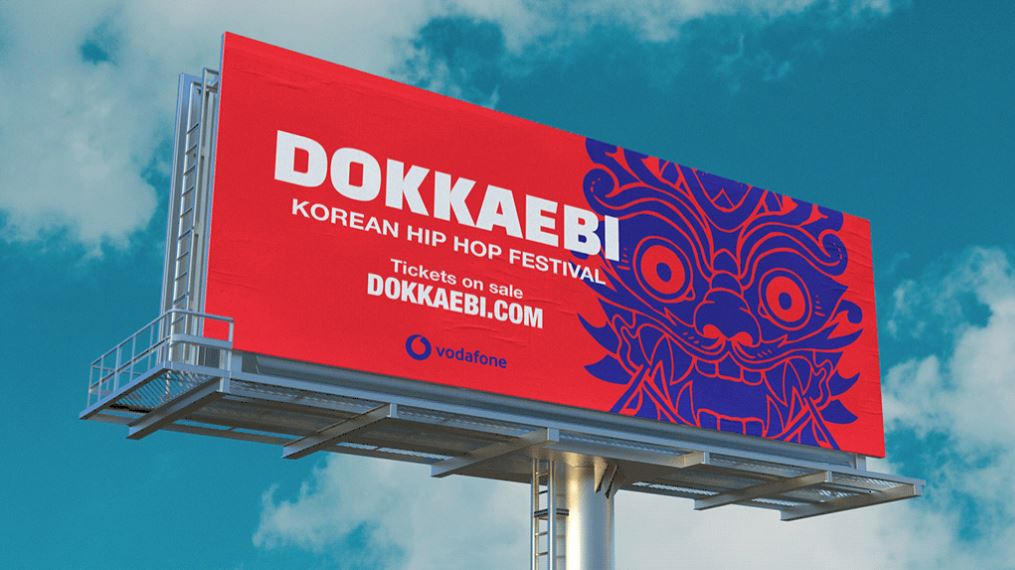Designed by former Yoobee student: Tora Hiramoto
Qualification: Diploma of Education, Graphic Design & Web Design
Career: Graphic Design, Freelance
We asked Tora what he would like to tell Yoobee students:
Tora HiramotoContinue to build up your portfolio. This is especially essential for Junior Graphic designers as you will most likely not have the experience to showcase in your CV.
- Analyse and copy the way professionals present their work on Behance.
- Re-work old projects to better reflect your current skills.
- Don't feel discouraged when you can't find or fail a job interview.I failed a whole bunch of job interviews but you just have to keep working on your skills and your portfolio. Even small opportunities are a good foothold.
For creative people, a portfolio is how you highlight your design skills and achievements. It demonstrates your abilities to potential clients, colleges, and employers and allows you to show your versatility, creative flair, and the amazing work you have completed.
Your portfolio should be an extension of you, your successes, your creative process, and how you solve problems. When looking for a creative job or continuing study, your portfolio is the first connection you will make with a client, workplace, or course.
It's your introduction to who you are as a person and creative professional.
A design portfolio should include:
- a selection of your best work
- samples of work you have done for clients
- information about yourself
- consider testimonials
- about your design skills
- about working with you on a team
- consider testimonials
- contact details.
Problem-solving skills are becoming increasingly important to employers. Sharing aspects of your design process (including early sketches) alongside your final work can give potential clients and employers valuable insight into your approach to solving problems and managing design constraints.
Portfolios can be shared in a variety of formats. It could be a collection of physical documents, a collection of digital documents, a video, or a website containing your content.
Hot Tips
Think about how your portfolio will appear to others
As excited as we all get about what we have done, consider what the work you are including says about you and if it will be appealing to your intended audience.
Select only your strongest pieces
Be sure your work makes you proud. If you feel you have to defend it, don't use it.
Showcase unique work
A portfolio is an opportunity to showcase your signature style. Try and include work that will make people think, 'Wow, now this is cool!' It doesn't need to be paid client work. Show off what you can do by including work you have done for friends, volunteer work, and personal projects. You can include work that is inspired by big brands. Just remember always to consider copyright and don't publish anything you don't have permission to.
Show off your variety
If you have a particular style or strength, ensure you show variety in that style. Include several different techniques that will show off your work. Try and include different media, such as print, web design, logo design, game design...etc.
Keep it fresh
The designs you include should show that you are aware of the current trends and design styles. Ensure that your portfolio is up to date. You may create a masterpiece when trying out that new Adobe tool!
Simplicity is key
Remember your design principles...whitespace is your friend. Not every space in your portfolio needs to be filled. Having clear spaces helps direct the audience's eyes to focus on where you need them to.

Snap a pic
Take some pictures if you have printed pieces you would like to use in your portfolio, such as packaging. You can create professional-looking photoshoots from your own home. Think about aesthetics, plain backgrounds, adding in some flowers or texture and making your work the focus.

The Halo Effect
The 'Halo Effect' is an interesting social psychological theory that describes how humans tend to associate positive attributes with people they are attracted to. It is a form of cognitive bias that affects the way people perceive not only other people, but anything that can be engaged with.
The more aesthetically pleasing something is, the more likely we are to believe it is high quality.
Aesthetics in your portfolio is important — it creates a connection and attraction to your audience. Because your portfolio is a personal representation of you, your creative flair and what qualities you have, the aesthetics of your portfolio should keep your audience engaged. If your portfolio is messy, uneasy on the eyes and unorganised, it will be hard for an audience to remain engaged. A clean portfolio with a nice look and feel will keep your audience engrossed and wanting to read more.

Colour is an essential element to consider when designing your portfolio. Colour can connect people to objects, images and scenes as well as ignite emotions. Let's remind ourselves of how to use some familiar colours:
- Red is typically seen as a colour of passion, danger, romance or violence.
- Green can relate to either nature or sickness.
- Blue is linked to calm or depression.
- Yellow is warm and inviting or a warning.
- Purple is often connected with royalty.
When creating a portfolio, the colours you choose can help or harm your work. There are amazing techniques when playing with colour.
When choosing the background of your portfolio, consider a colour that will not distract viewers from your work. Background colours such as light and dark greys, white, black and neutral tones allow the focus to be on your work.
A good starting point is to choose backgrounds that contrast with your work. Think about opposites: if your work is brightly coloured, then choose a muted colour to help your work stand out, and vice versa.
The table below gives a broader explanation of the 'language' of colours.
| Colour | Meaning |
|---|---|
| Red | Anxiety, arousing, daring, dominant, energy, excitement, health, life, love, passion, power, protection, spirited, stimulating, strength, up-to-date, danger. |
| Orange | Abundance, arousing, comfort, daring, excitement, extraversion, fun, happiness, lively, security, sensuality, spirited, warmth. |
| Yellow | Arousing, cheerful, confident, creative, excited, extraversion, friendliness, happiness, optimism, self-esteem, sincerity, smiley, spirited. |
| Green | Calm, comfort, equilibrium, harmony, health, hope, nature, outdoorsy, peace, prosperity, relaxation, security, serenity, soothing, tender. |
| Blue | Calm, comfort, competence, coolness, dignified duty, efficiency, intelligence, logic, peace, reflection, relaxation, reliability, security, serenity, soothing, successful, tender, tranquillity, trust. |
| Purple | Authenticity, charming, dignified, exclusive, luxury, quality, regal, sensuality, sophistication, spiritual, stately, upper-class. |
| Pink | Charming, cheerful, feminine, gentle, nurturing, sincerity, soft, sophistication, tranquillity, warmth. |
| Brown | Nature, outdoorsy, reliability, ruggedness, security, support, tough. |
| Black | Dignified, efficiency, elegance, emotional safety, glamour, power, richness, ruggedness, security, sophistication, stately, substance, tough, upper-class. |
| White | Calm, clarity, cleanness, down-to-earth, happiness, heavens, honesty, hygiene, innocence, peace, purity, serenity, soothing, tenderness. |
'Layout' refers to the way in which text or pictures are set out on a page. The purpose of layout is to distribute the text, images, and other content on a page to achieve a clear and legible composition.
Going back to the principles of design, using strong composition to display your collection of work - the layout you use and the thumbnail images you compose, will impact the reviewer of your portfolio and provide a sense of confidence in your design aesthetic from the moment they land on your page.
As you'll see in the video below, whether you're designing a page for print or a website, you can apply some common principles to ensure there is balance.
Practising Activity — Your persona
🕔 About an hour
Do you remember the first activity you did for this programme? You may refer to the mood board you made when introducing yourself to your peers in the Animation course.
Getting started
Task 1: Modify the mood board you made previously, or create a new one and be sure it includes how you feel about your creative personality and work as a professional now that you have nearly completed the programme. After all these weeks of creative learning and practice, you can now show off your progress! You may have developed your own style or not. Have fun fleshing out your mood board into the person you are today. You can continue this in Photoshop or Illustrator — whichever you prefer to use.
Task 2: Use the Character Persona template and create a persona of yourself tailored to how you want your portfolio reviewers to see you. This persona is the public you and might be quite different from your personal life and endeavours. Feel free to mix them only as much as you are comfortable.
Hold onto this because we're going to refer to it later when you plan out your portfolio in the section Preparation and Planning.
